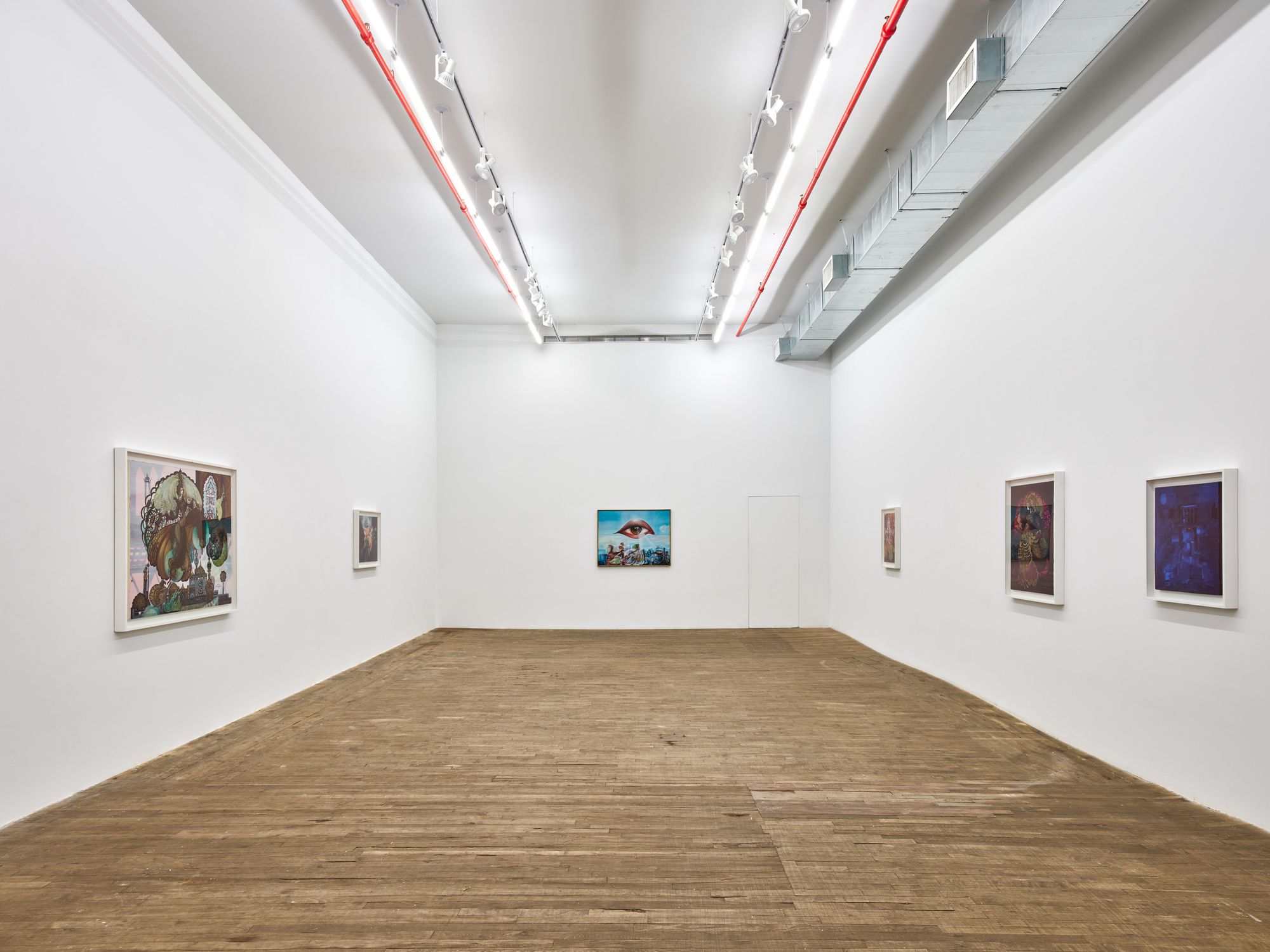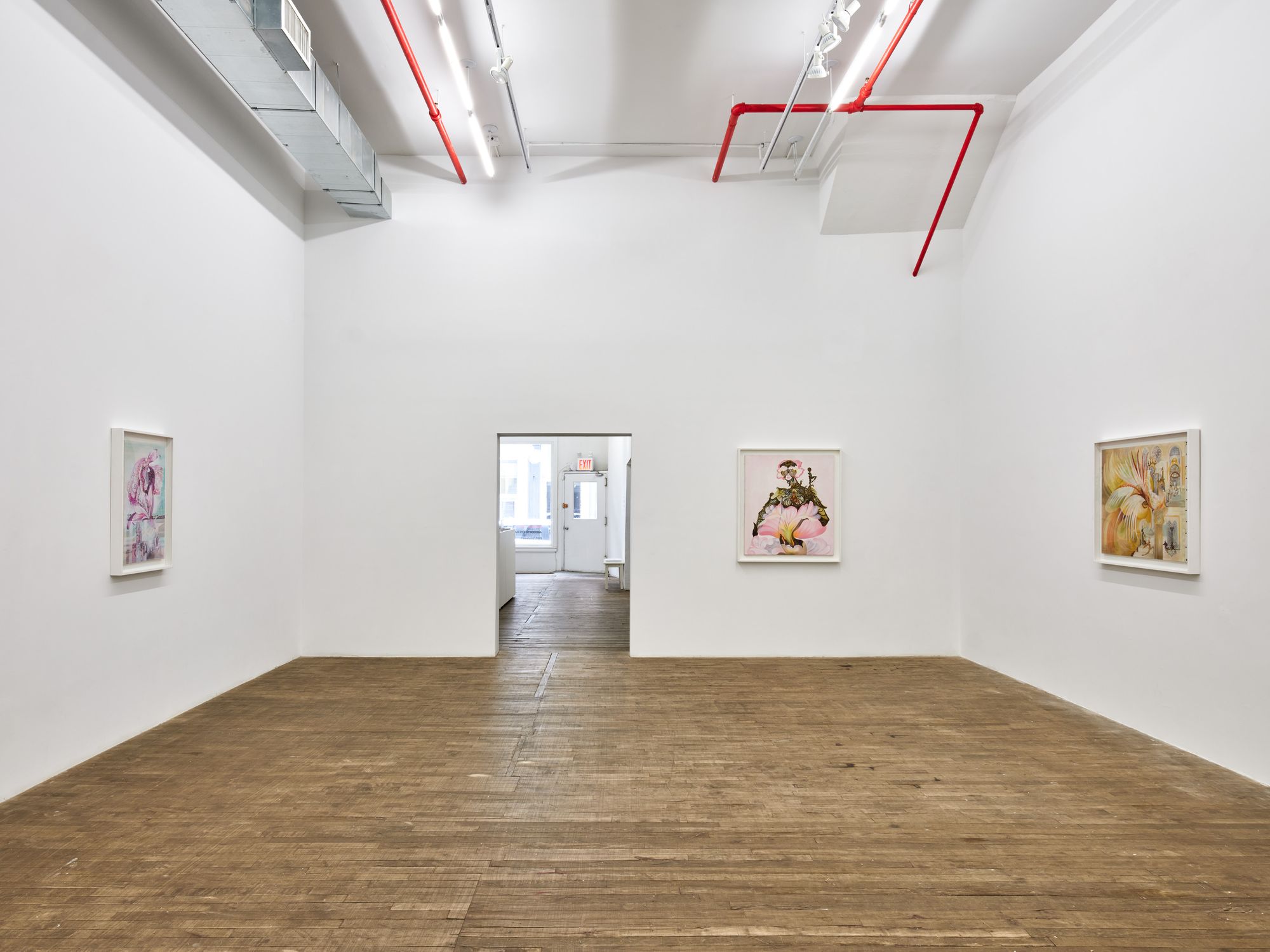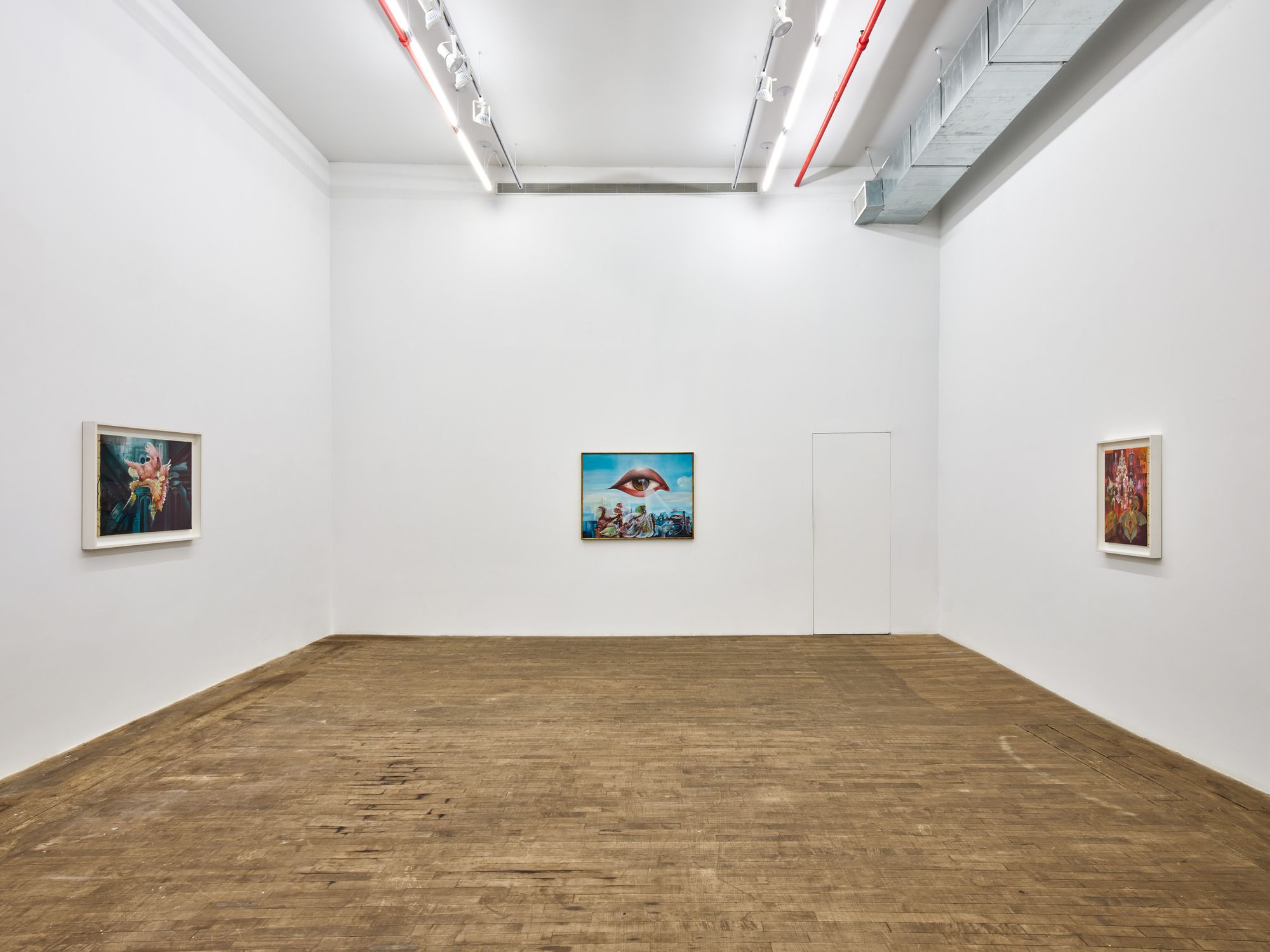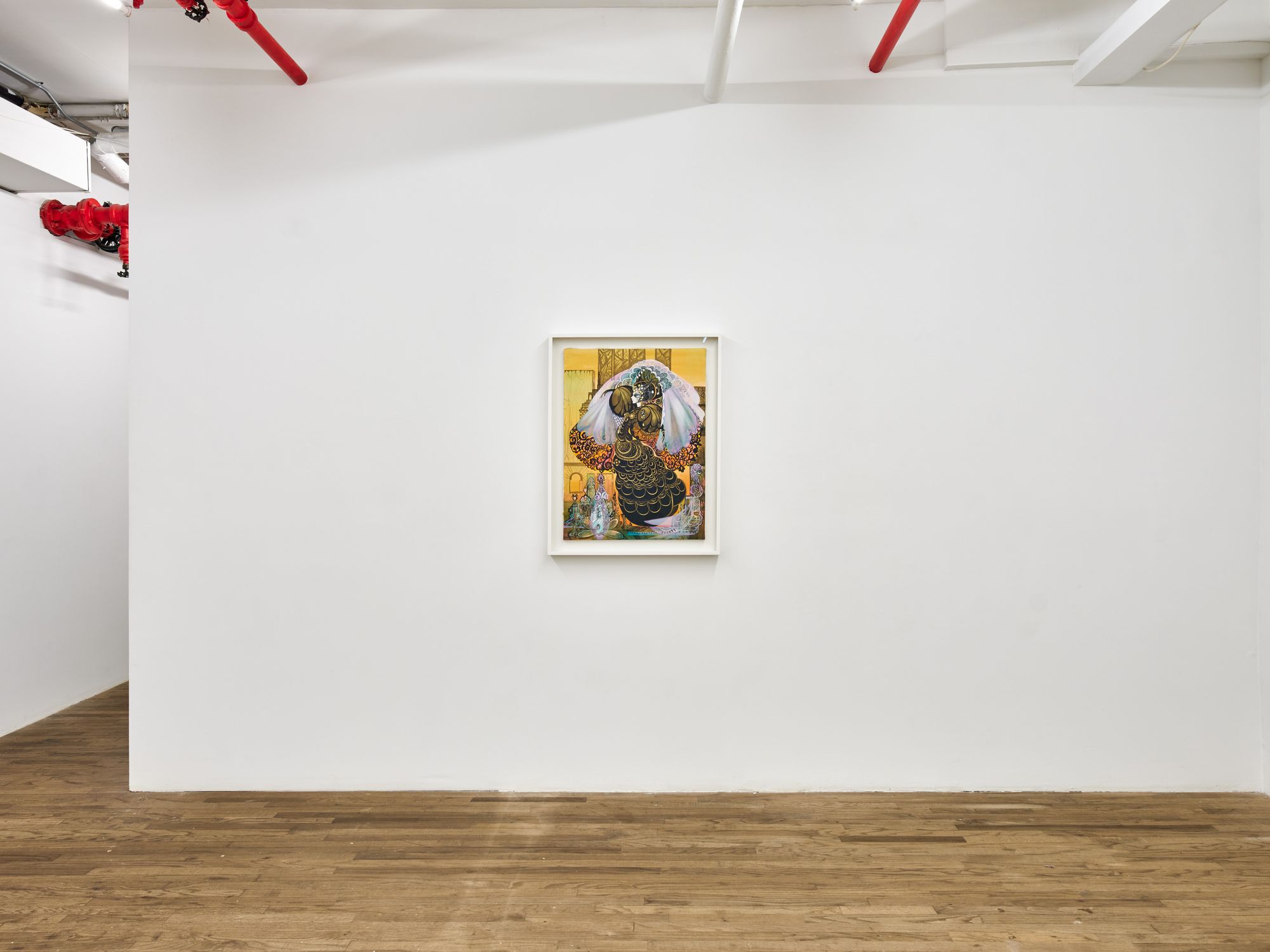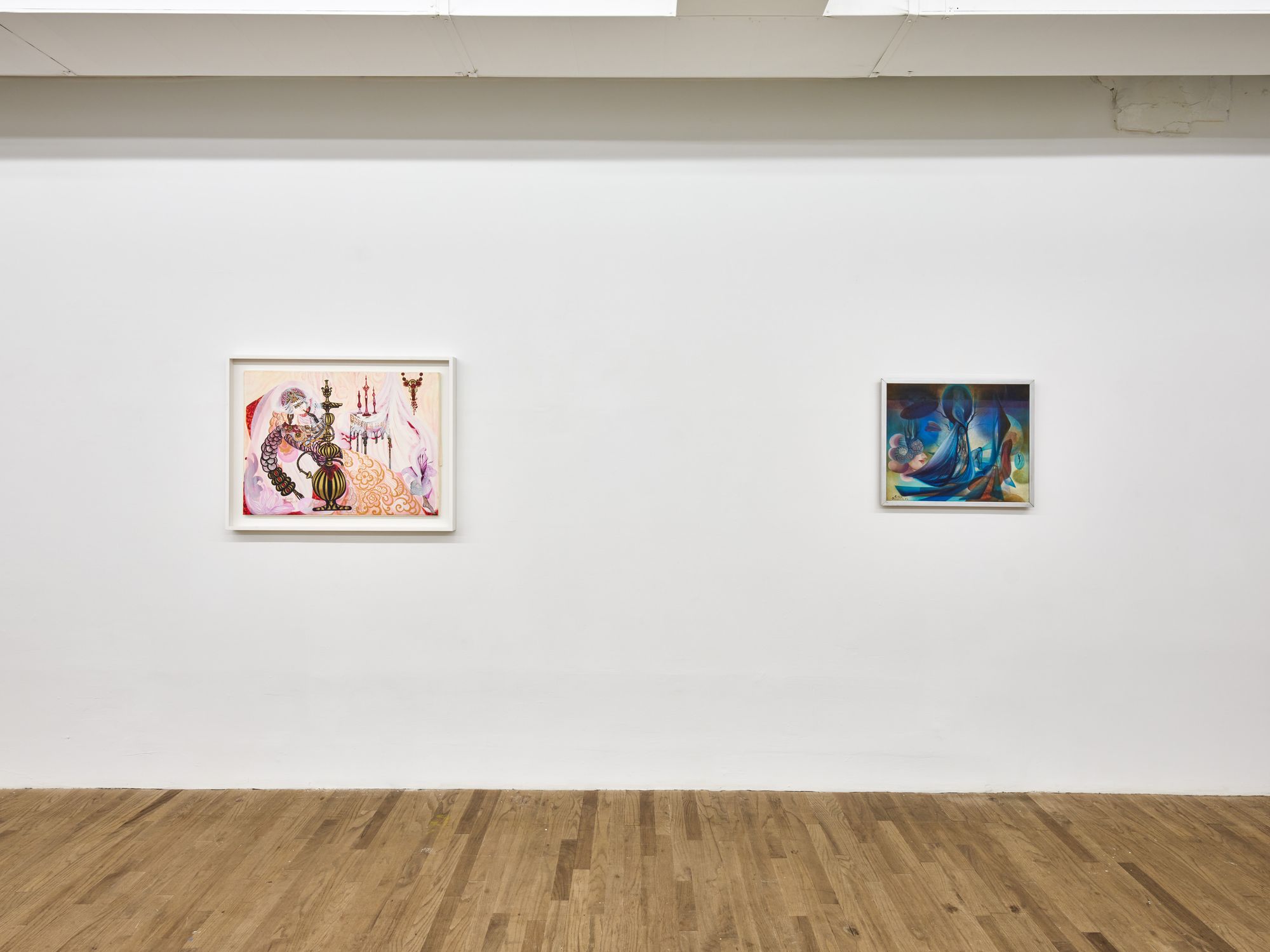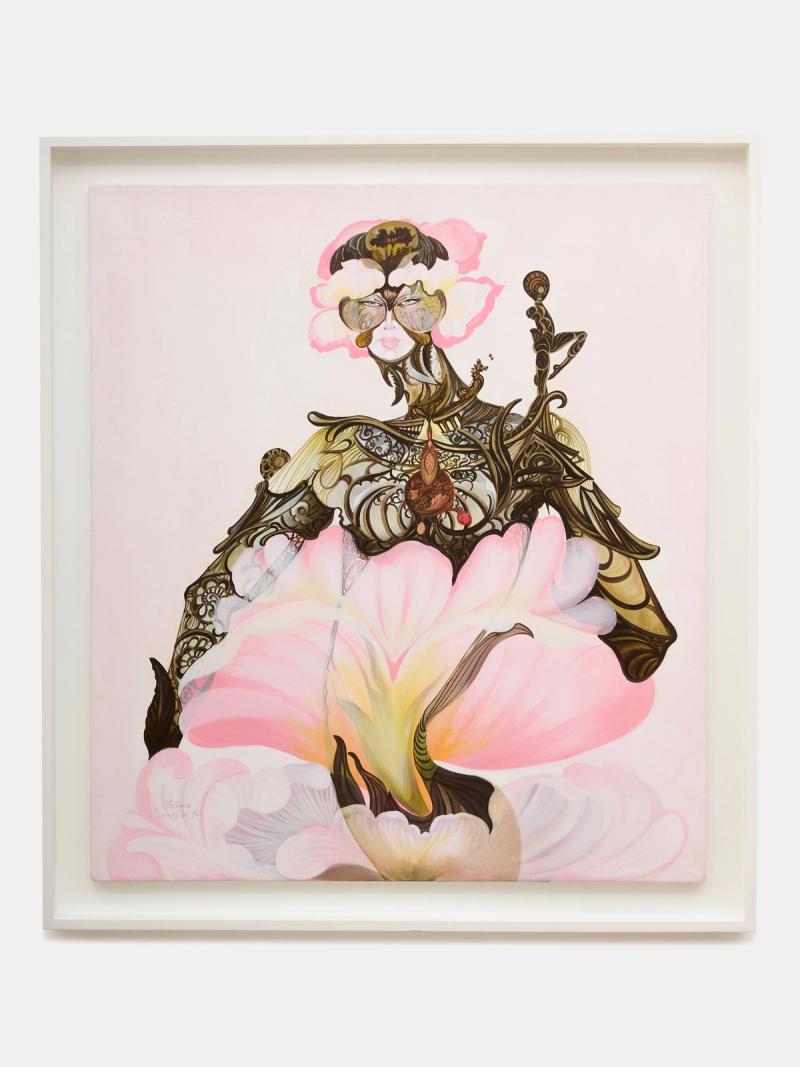
(55 Walker) is pleased to present Juliana Seraphim: The Flower Woman, opening Thursday, June 26.
Juliana Seraphim’s singular surrealist style and embrace of desire and female subjectivity redefined the modern art landscape of the Middle East. Born in Jaffa, Palestine, Seraphim’s early years were profoundly shaped by her family’s arrival in Lebanon following the start of the Nakba in 1948. This early experience of displacement and exposure to a marred and discriminatory world indelibly informed her work. Through sensuous detail and phantasmatic figures, Seraphim built an iconography rooted in the perception of a "woman’s world,” exploring sensuality, selfhood, and spiritual longing.
Spanning four decades, the exhibition traces the evolution of Seraphim’s oeuvre, beginning with her abstract cityscape paintings from the early 1960s. Works such as Clear Winter Night under the Snow in Baalbek (c. 1960s) exemplify her early engagement with architectural motifs. By the 1970s, Seraphim’s surrealist style had fully emerged in works like Untitled (1978), where eyes, sea life, and ethereal female forms coalesce in scenes lush with myths and subconscious memory. These works reveal her inspiration from the Italian frescoes that adorned the ceilings of her grandfather’s home in Jerusalem, as well as the seashore near Jaffa, where she often played as a child.
Works


White Peacock, 1991
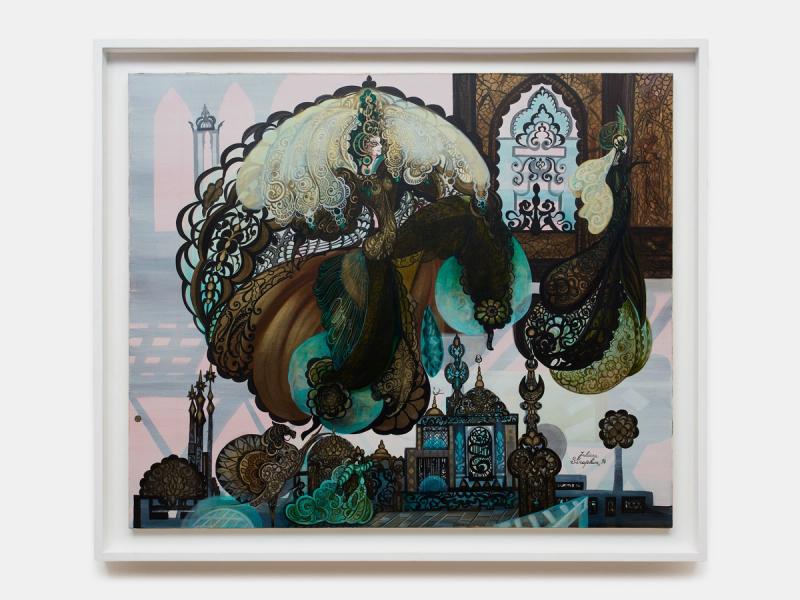
Dream of Samarkand (Rêve de Samarcande), 1994
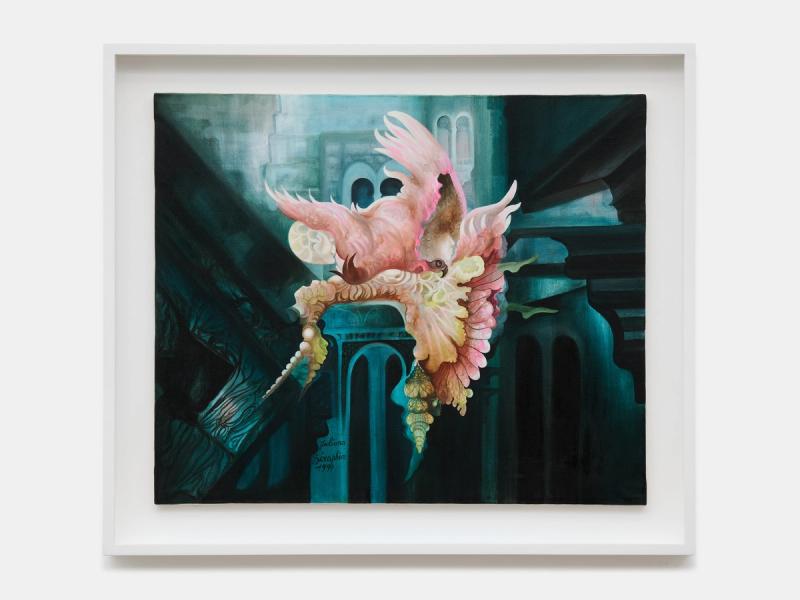
The Forgotten Doll (La poupée oubliée), 1991
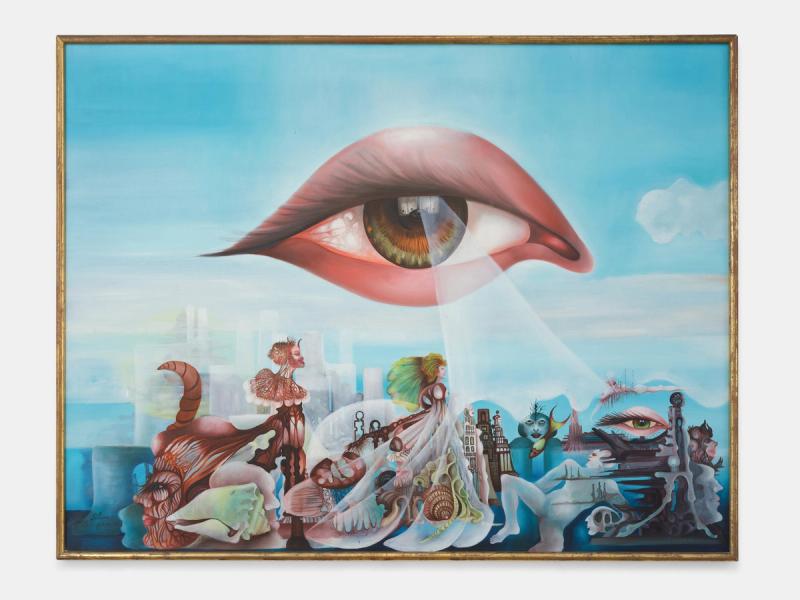
Untitled, 1978

Game of Masks (Jeux de masques), 1993
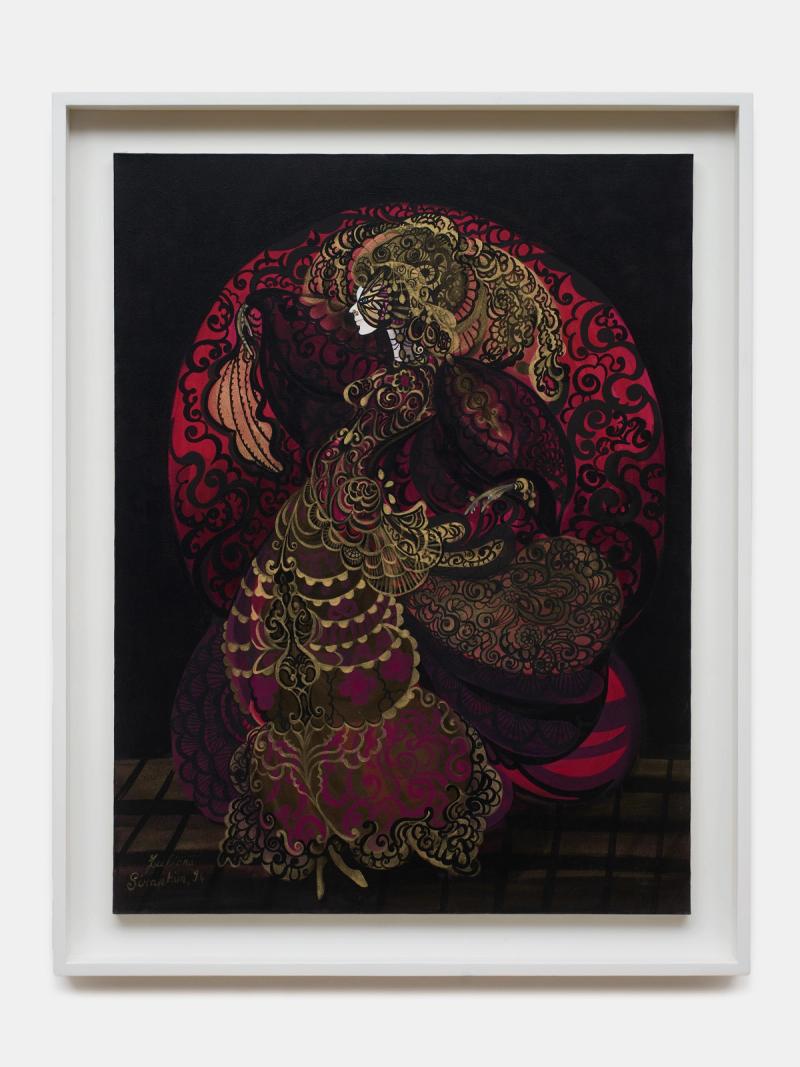
Veil Dance (Danse du mandile), 2010
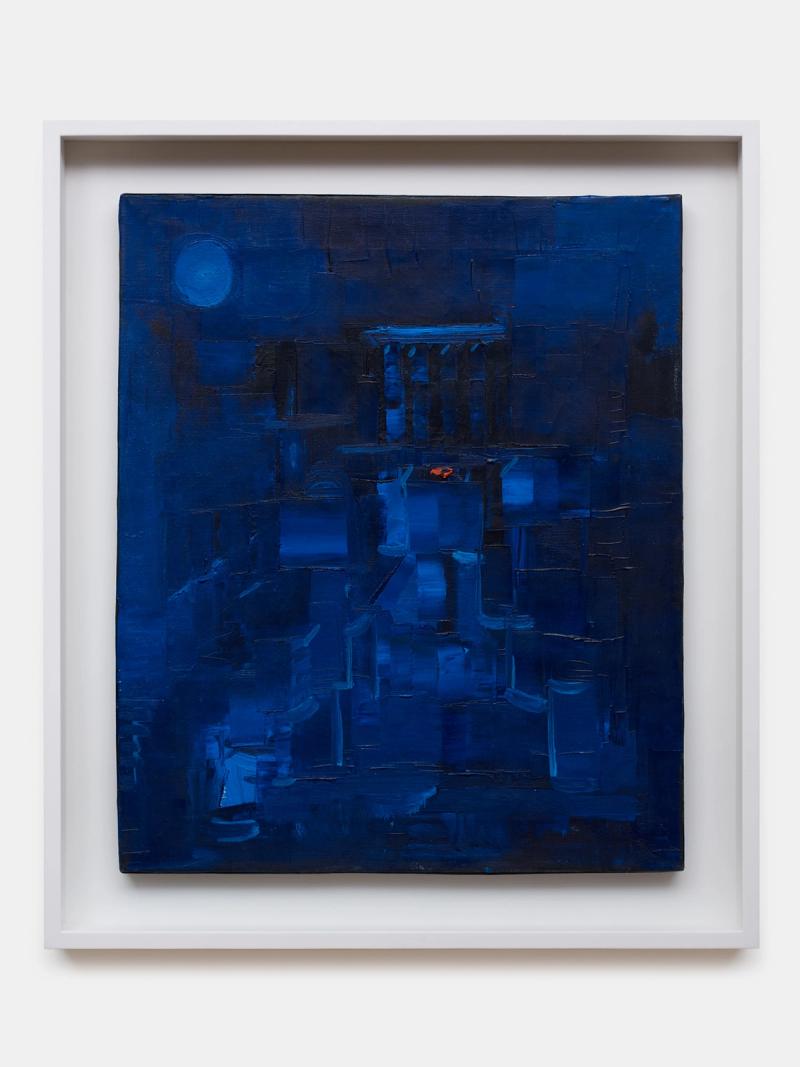
Clear Winter Night under the Snow in Baalbek (Nuit claire d’hiver sous la neige à Baalbek), c. 1960s
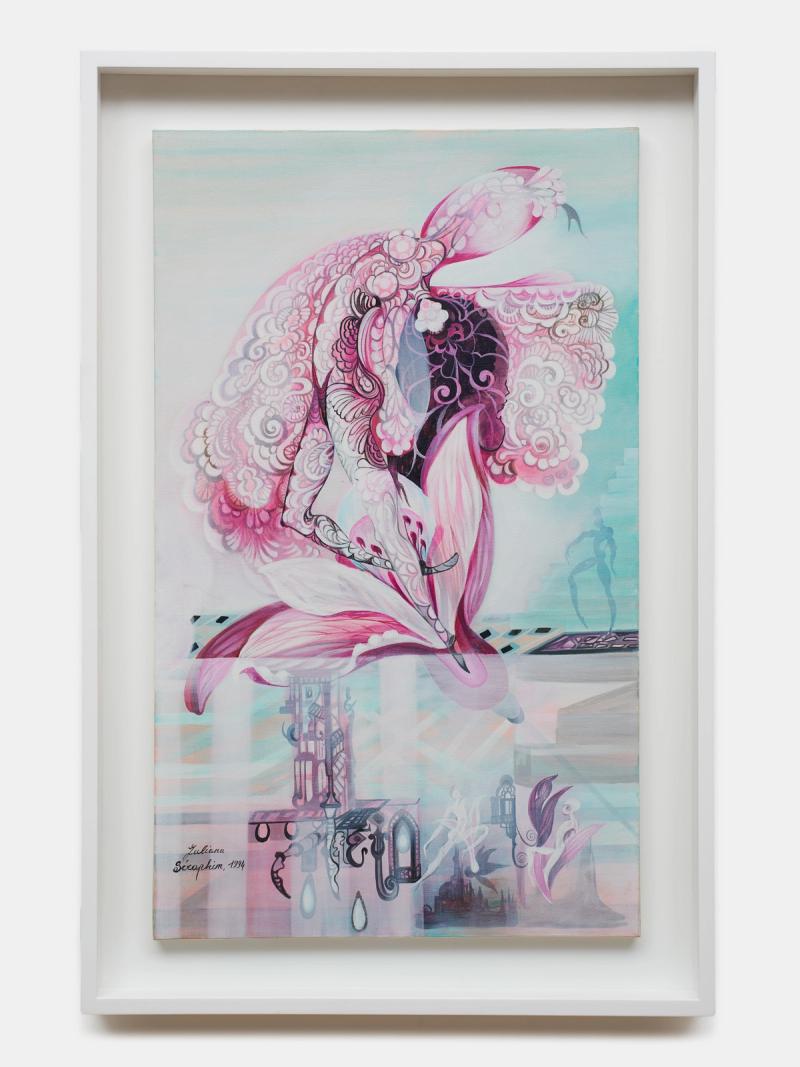
Dance of Love (Dance de l'Amour), 1994

The Dance of Ishtar (La Danse d'Ishtar), 1994

The Golden Palace, c. 1980
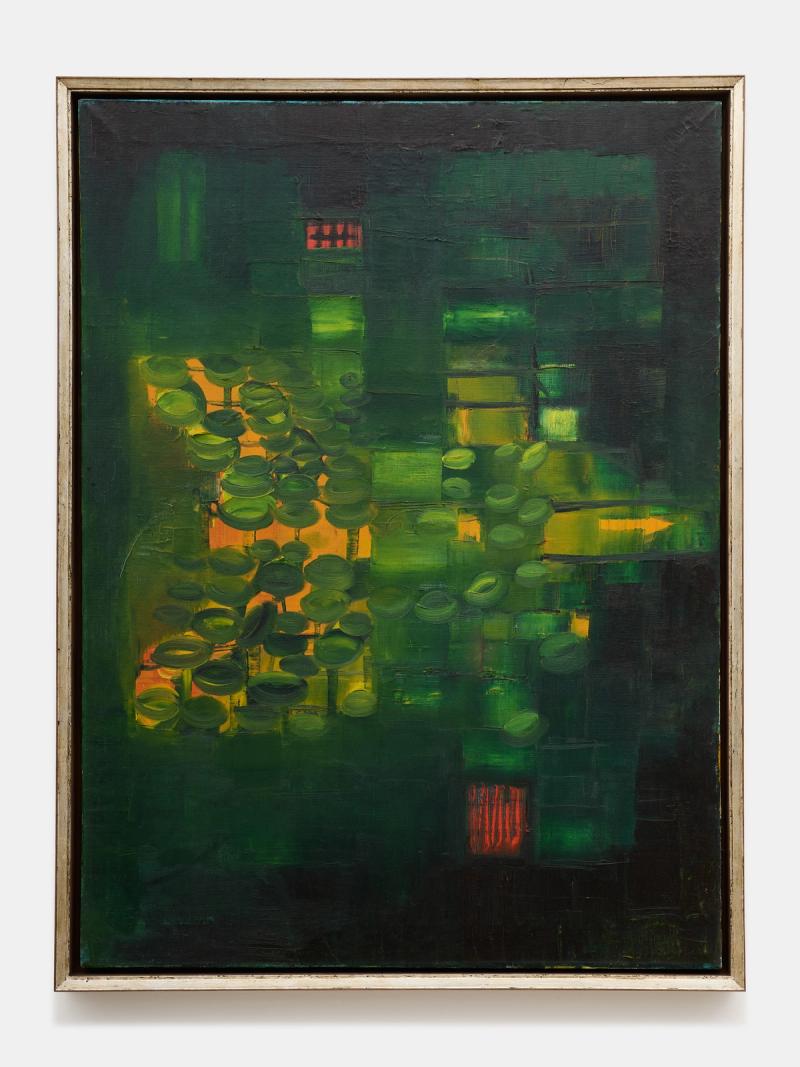
House Behind the Trees, 1965

Orphée, 1998
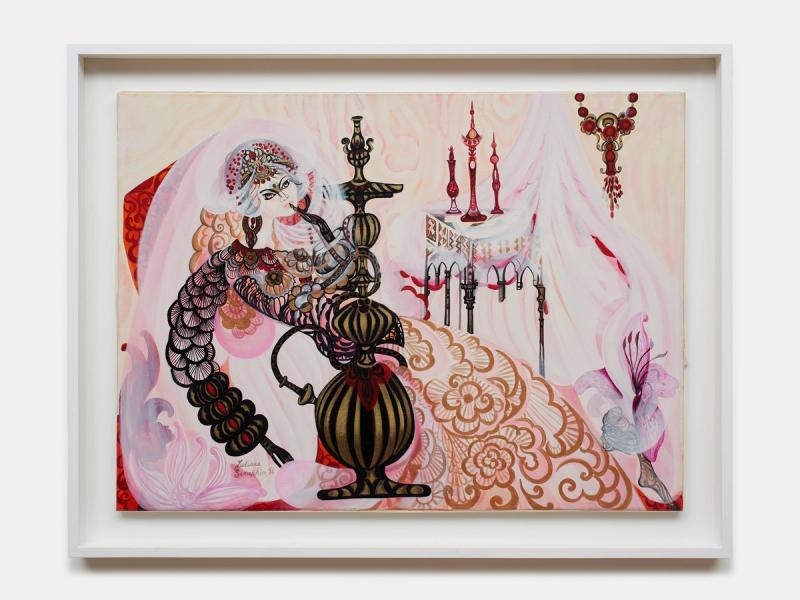
Princess with a Hookah (Princesse au narguileh), 1973

